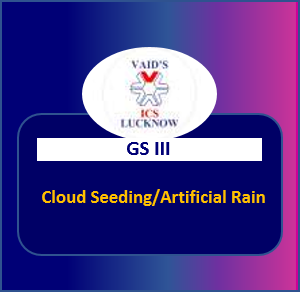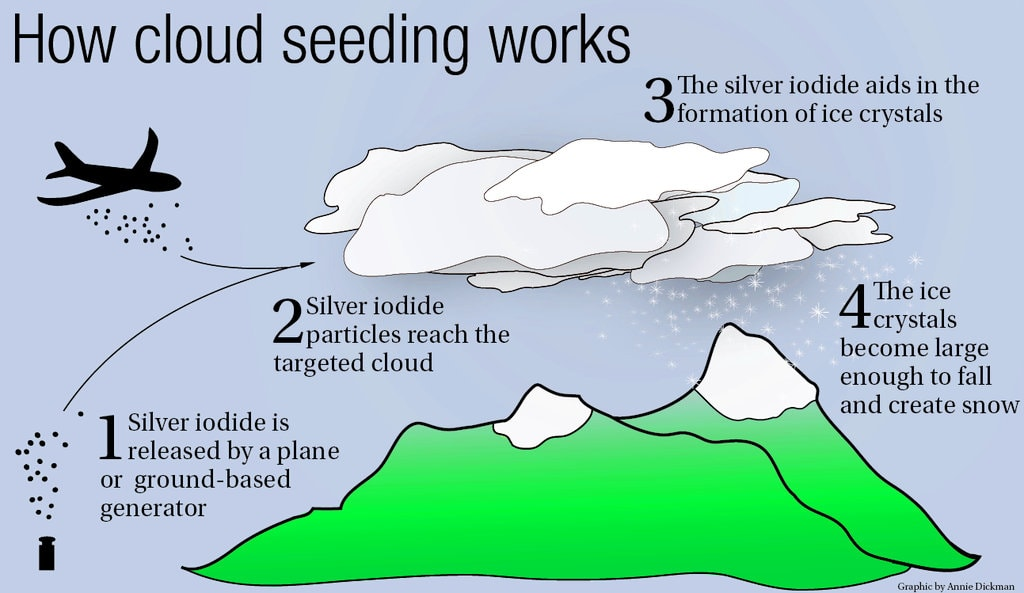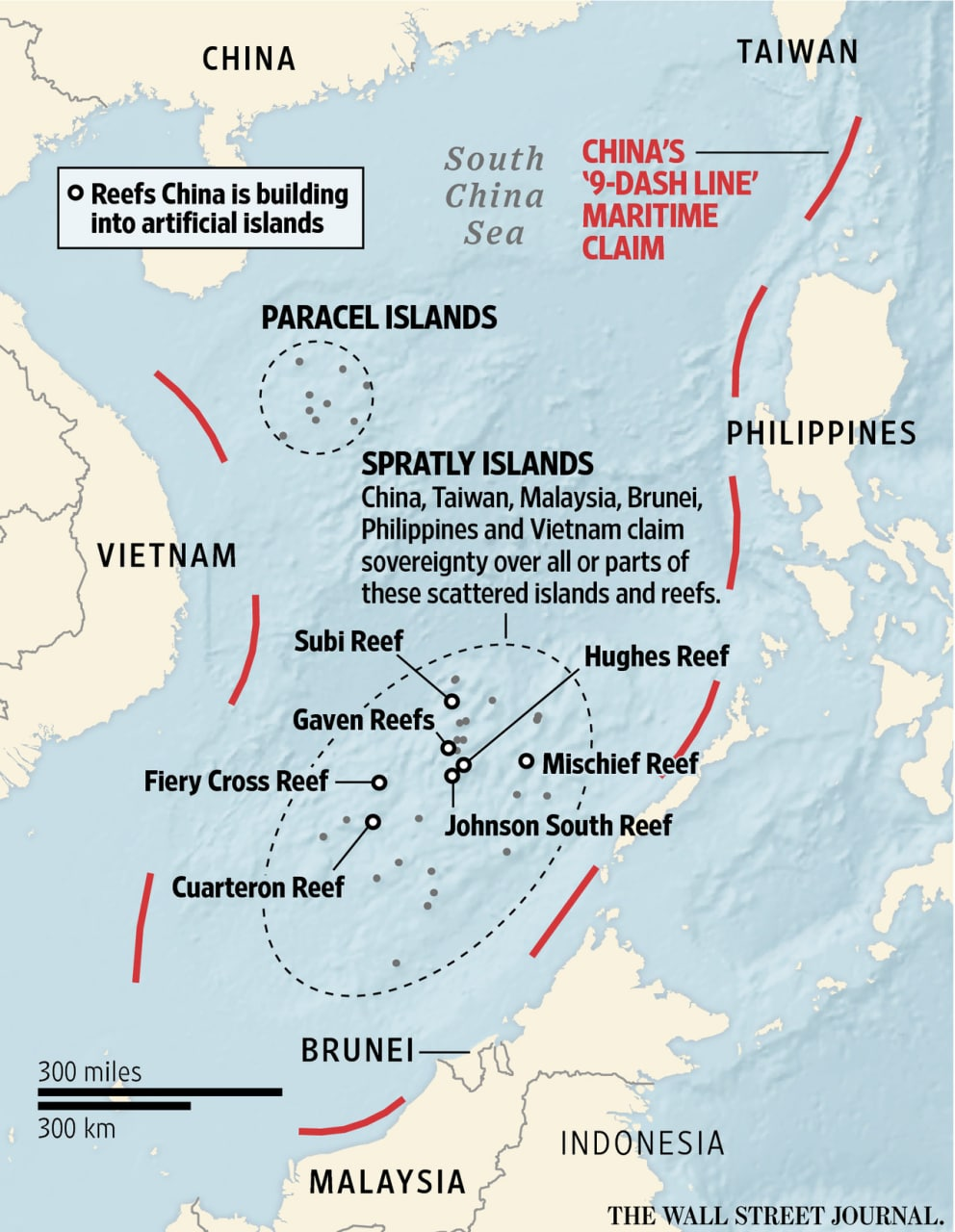CURRENT AFFAIRS
Get the most updated and recent current affair content on Padhaikaro.com
Cloud Seeding/Artificial Rain
- Vaid's ICS, Lucknow
- 30, Aug 2021

Why in News?
The ministry of environment has recently said that the drought prone regions of NCR can have artificial rain .
What is Artificial Rain?
- It’s a practice of artificially inducing or increasing precipitation through clouds by adding external agents.
- The foreign particles which are drenched over these clouds can be Dry Ice (solid carbon dioxide), Silver Iodide, Salt powder This process is known as Cloud Seeding. This stimulation is done by aeroplanes or rockets. And then finally “rain on”.
Cloud Seeding (Weather Modification):
- Cloud seeding is a kind of weather modification technology to create artificial rainfall.
- It works only when there are enough pre-existing clouds in the atmosphere.
- Drones are charged into the clouds and cause an electric shock due to which they clump together and cause rainfall.
- Otherwise, in this process either silver iodide, potassium iodide or dry ice (solid carbon dioxide) is dumped onto the clouds causing rainfall.
- The seeds of chemicals can be delivered by plane or simply by spraying from the ground.
- Cloud-seeding chemicals can be dispersed in clouds either by fly-through aircraft or by ground-based dispersion devices that use rockets or guns to fire canisters into the sky.

Applications of Cloud Seeding:
Creation of Rain:
- Cloud seeding is the best way to consider improving rainfall quantity in case of inadequate rainfall .
- Arid areas usually have conditions that may be harsh in terms of food security and a conducive environment for living.
Cloud seeding can bring rain, which makes the natural environment flourish and becomes more habitable.
- Boosting of the Economy: Agricultural production is important to the local economies of many regions around the world.
- Rain is important in achieving a proper harvest.
- Weather Regulation: Cloud seeding provides an avenue for controlling prevailing weather conditions in different areas.
- Geographically oriented: Cloud seeding is primarily done to create certain conditions in specific areas, also termed as microclimates. Places like airports, for instance, often use cloud seeding to create a stable condition for their runway. This is to ensure that planes are not restricted from taking off or landing.
Concerns:
- Requires the use of Potentially Harmful Chemicals: Some chemicals are potentially harmful to the natural environment. Mostly, this applies to the plants which depend on the contaminated rain to produce food.
- It is expensive: Cloud seeding is a very expensive process.
- Planes are used to get the chemicals into the air and this is a big obstacle as some of the areas in need of this technology do not have enough financial backing to facilitate the process.
- Poses Weather Problems: Cloud seeding could have many dire consequences to the environment if not well regulated.
Dry areas are not usually well-positioned to handle certain weather conditions, and thus, may become easily flooded and cause more harm to the already struggling environment.
Facts for Prelims:
Hurricane Ida
Hurricane Ida is an active and very powerful hurricane that became the second most intense hurricane to strike the U.S. state of Louisiana on record, only behind Hurricane Katrina, and tied for the strongest landfall in the state by maximum winds with Hurricane Laura in 2020 and the 1856 Last Island hurricane.
nine-dash line
The nine-dash line—at various times also referred to as the ten-dash line and the eleven-dash line—refers to the ill-defined demarcation line used by the People’s Republic of China (China) and the Republic of China (Taiwan), for their claims of the major part of the South China Sea.
- The contested area in the South China Sea includes the Paracel Islands, the Spratly Islands,and various other areas including Pratas Island and the Vereker Banks, the Macclesfield Bank and the Scarborough Shoal.
- The claim encompasses the area of Chinese land reclamationknown as the “Great Wall of Sand“.
- Despite having made the vague claim public in 1947, neither the PRC nor the ROC has (as of 2018) filed a formal and specifically defined claim to the area.
